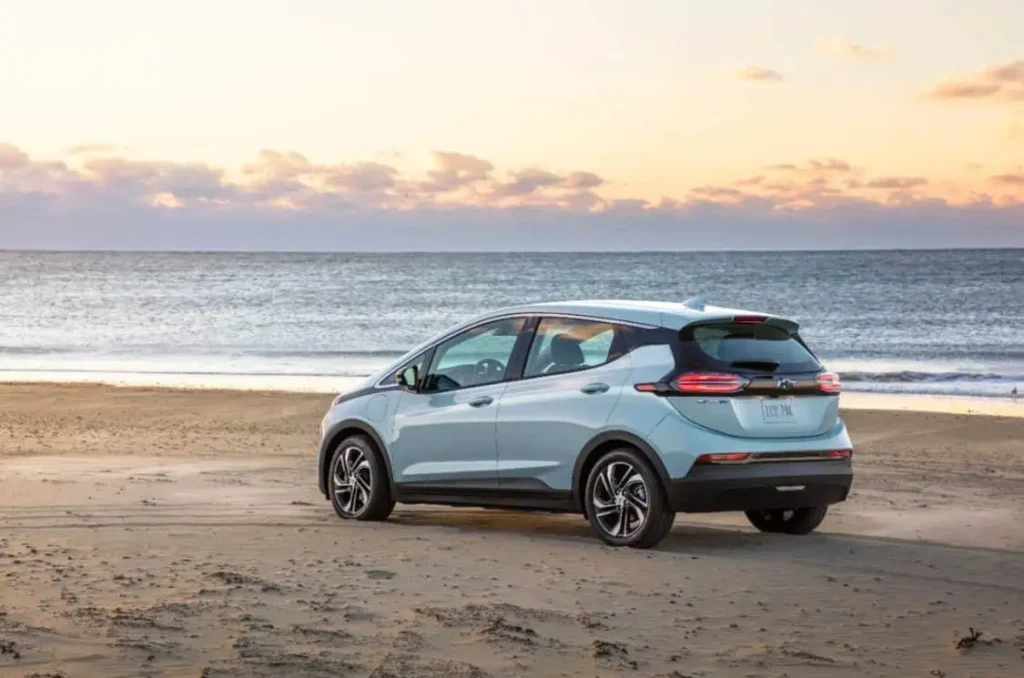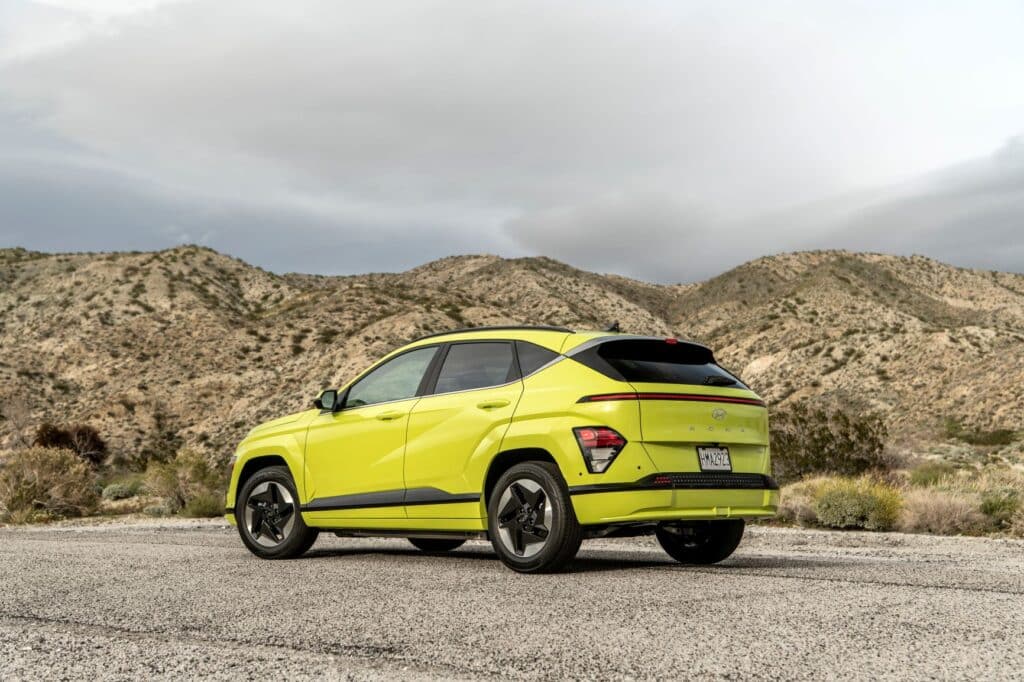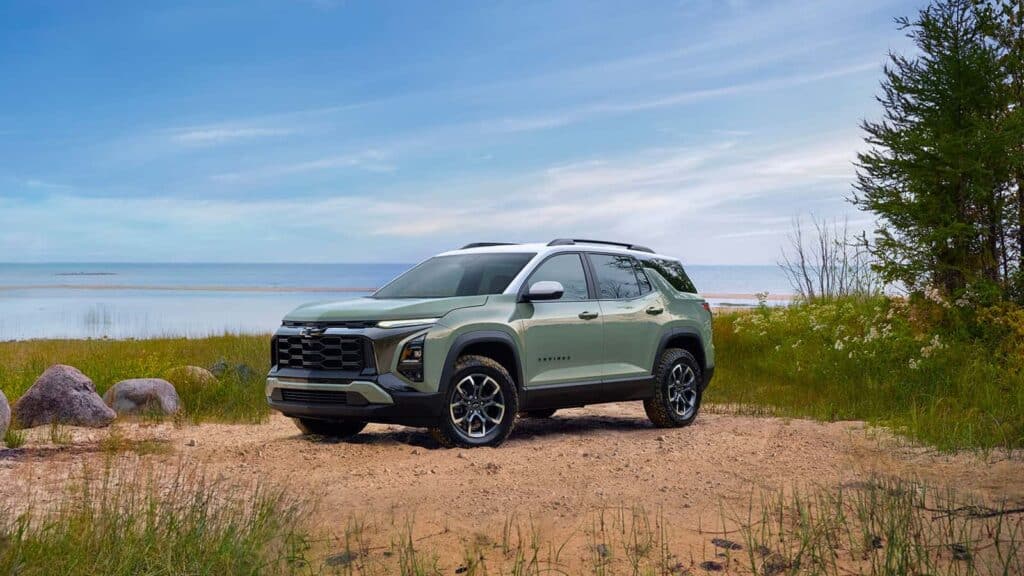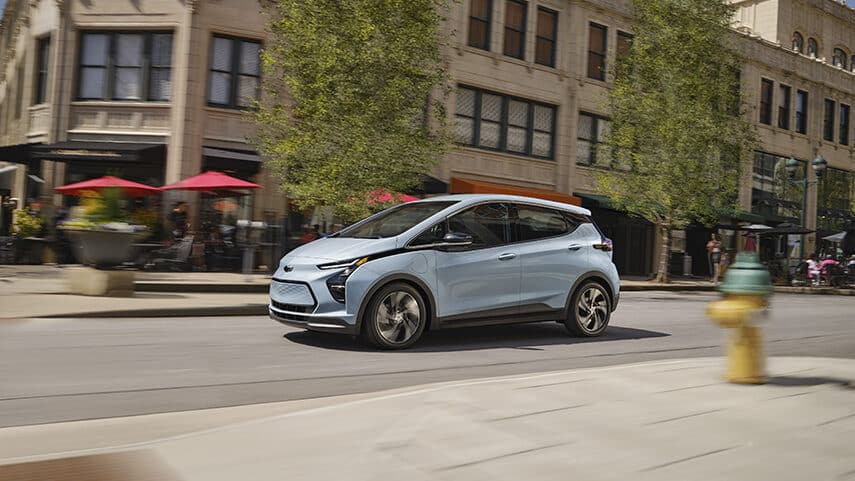Why We Need More Cheap EVs in 2024
In new technology, early adopters often pay a premium before costs decrease over time. When EVs re-entered the market in the late 2000’s, their prices were significantly higher than comparable gasoline-powered internal combustion engine (ICE) vehicles, making them accessible mainly to those willing to pay more for the novelty and innovation.
OEMs started high-priced with EVs, and worked their way down. OEMs make more profit on higher-priced vehicles, so most new EVs available today remain in the luxury segment. According to data from Kelley Blue Book, the average transaction price for electric cars was $56,520 vs. gas-powered vehicles at $48,401 in July 2024.
Few Low-cost New EVs Exist in 2024
The low-cost EV segment remains threadbare in America for 2024. Few low-cost options exist, preventing a massive segment of the car-buying public from switching from gas to electric. EV experts say low-cost new EVs are vital to promoting mass EV adoption in America.
Most EVs have become more expensive while others have seen price reductions. Several automakers like Chevrolet, Hyundai, and Nissan have lowered prices on their entry-level EVs. The 2023 Chevy Bolt, for instance, was about $10,000 cheaper than the 2017 model when it first launched. Similarly, the Hyundai Kona EV saw a price reduction in 2023, partly to maintain its competitiveness as newer, more advanced Hyundai EVs entered the market.

The Profitability Issue
Ken Boyer addressed the profitability issue in his excellent book, “The Electric Vehicle Revolution,” (Rowman & Littlefield Publishers, 2024). In the book, Boyer pointed out three “Gears of Change” as a fundamental principle of how a worldwide shift from gas engines to electric can feasibly happen for the transportation sector. The Three Gears of Change refer to: Willingness to Commit, Ability to Profit, and Transforming the Supply Network. Most legacy OEMs have not had the “Ability to Profit” yet on their EV models in 2024.
Why OEMs Are Not Profiting on EVs
The reason OEMs are not reaching profitability on EVs yet is that they are not producing them in sufficient numbers. Car companies need to produce vehicles in mass production to make a profit. Because EVs have not reached mass adoption yet in the United States, there are not enough buyers yet for OEMs to make EVs using mass production, for the most part.
It is interesting that this is the same reason EVs were killed by gas cars in the 1800’s. Henry Ford’s Model T was the first mass-produced gas car, significantly cutting costs, and therefore was offered at a low price. EVs outnumbered gas cars at the time, however the Model T was less than half the cost of the average EV. We all know what happened after that. EVs did not show up again in any large numbers again until recently.
EVinfo.net spoke with Ken Boyer about cutting costs in EV production, resulting in reduced prices.
Boyer said: “From 1909 to 1923 Ford’s assembly line techniques reduced the price of the Model T by 75%.” The carmaker(s) today that find ways to reduce the cost to produce and thus the price for consumers to buy, will win this race.”
Top Low-priced EV Contenders
CNET listed the top cheapest electric cars for 2024. After the Chevy Bolt, the 2024 Nissan Leaf and 2024 Hyundai Kona electric made the list. The Kona’s starting MSRP of $32,675, EPA-est. range up to 261 miles, and power up to 201 hp/150 kW make it a strong contender. The Hyundai Group is one of the carmakers expected to lead the EV revolution in 2025 and beyond. The Nissan Leaf is not recommended, as it uses obsolete ChadeMo charging, which is now hard to find. 2024 is the last year Nissan is offering the Leaf in the US.

GM’s Chevy Equinox
The automotive industry is abuzz with Chevrolet’s announcement of the new electric version of the Chevy Equinox in 2024. Positioned to become the leader in electric vehicle (EV) affordability in the U.S., this innovative SUV starts at just around $42,000. Despite its competitive price, the electric Equinox doesn’t skimp on performance, offering an impressive range of 319 miles on a single charge.
General Motors (GM) announced that the base model, the Equinox EV 1LT, will start at $34,995. The 1LT—the most affordable variant—will be available for ordering later in 2024. While GM has not specified an exact date for its availability, the Equinox EV 1LT is expected to set a new benchmark in the U.S. EV market for affordability combined with a 319-mile range.

Next-generation 2025 Chevy Bolt
Chevrolet’s Bolt was the cheapest EV in America, with a starting price of $27,495 in early 2024. At the time, buyers could acquire a new Bolt 1LT for as low as $19,995 after applying the full $7,500 federal tax credit. This made the Bolt an attractive option for budget-conscious consumers looking to transition to electric vehicles.
However, Chevrolet pulled the Bolt from its lineup for the 2024 model year, which caused some disappointment among EV enthusiasts. The good news is that the Bolt is set to return in 2025, likely with updates and improvements to maintain its appeal as an affordable, efficient electric vehicle.
The first generation Bolt suffered from several problems. Most significant among these problems was its slow charging speed. The 2025 Bolt promises to fix this issue and others, making it the most anticipated cheap EV of 2025. It could easily become America’s favorite new EV in 2025.

Incentives Save Money on BEVs, PHEVs and FCEVs
The federal government provides a point-of-sale tax credit of up to $7,500 for qualified buyers of select new fully electric, plug-in hybrid (PHEVs), and fuel-cell vehicles (FCEVs). These incentives significantly reduce the upfront cost of EVs, helping to make them more competitive with traditional gasoline-powered cars. Additionally, some dealerships offer the same tax credit to qualified buyers who choose to lease an EV, making leasing a more attractive option for those who prefer it. FCEVs are not recommended, due to multiple problems.
For those considering a used electric vehicle, the federal government also offers incentives of up to $4,000 on specific models. These incentives help lower the price of used EVs, further closing the gap between the cost of electric and gas-powered vehicles.
Hybrids are a necessary bridge to BEVs for now due to multiple barriers. However, if you must go hybrid, choose PHEVs. There’s no good reason to drive a HEV (hybrid electric vehicle) or ICE vehicle in 2024. PHEVs are better for the environment and your pocketbook, as they offer the greatest cost savings after BEVs. If you drive PHEV, don’t forget to plug it in. When the plug is not used, the PHEV is effectively an ICE, damaging the environment.
EVs Cost Less Than ICE Over the Long Term
Consumers are increasingly weighing the potential savings of owning a new or used EV compared to a traditional gas-powered car. However, according to experts, the decision isn’t always straightforward.
Several factors influence the overall cost-effectiveness of an EV. While lower purchase prices, especially for used models, can make EVs more attractive, potential buyers must also consider variables like battery life, charging infrastructure availability, and maintenance costs. Additionally, regional differences in gas prices, as well as electricity rates and the availability of tax incentives or rebates can impact the total cost of ownership.
A report by the nonprofit Coltura supports the notion that EVs can put more money back into owners’ pockets over time, thanks to reduced ongoing expenses. EVs generally offer lower operating costs—thanks to cheaper electric “fuel” and reduced maintenance compared to internal combustion engine vehicles—the initial cost savings from an EV could be offset by concerns about battery degradation or the availability of affordable charging options. Therefore, while EVs have the potential to provide significant savings, the decision to switch from a gas-powered car requires careful consideration of individual circumstances and long-term financial implications.
Coltura examines annual EV fuel costs and maintenance savings. In the second quarter of 2024, American drivers saved an average of 8.1 cents per mile on fuel by driving an electric vehicle (EV) instead of a gasoline-powered car, an increase from 7.6 cents per mile at the end of 2023. This uptick in savings is attributed to the combination of rising gasoline prices and stable or decreasing electricity costs. On average, U.S. EV drivers saved $100 per month on fuel and maintenance during this period, highlighting the financial benefits of owning an EV beyond just the purchase price. These savings reflect the ongoing shift in the cost-efficiency of EVs compared to traditional vehicles.
EVs Are Becoming More Practical and Accessible
Technological advancements are also making EVs more practical for everyday use. Most models now offer ranges exceeding 300 miles on a single charge, addressing concerns about range anxiety. Charging times are improving, with more fast chargers available that can recharge a battery in under 30 minutes. From July 2023 to July 2024, the number of public Level 2 and DC fast chargers increased by 26%, further enhancing the convenience and appeal of EVs.
July 2023: Level 2: 108,661, DCFC: 32,072, TOTAL: 140,733
July 2024: Level 2: 133,388, DCFC: 43,838, TOTAL: 177,226

Lots of EV Options at Higher Price Points
EVinfo.net has reported recently on several luxury and high-performance EVs on the higher end of the price spectrum. We do this to highlight that nearly every OEM has released, or plans to release an electric model soon, and there is an option for everyone. Some examples are Ferrari, Range Rover, and Polestar. However, our main focus is promoting mass EV adoption in America and around the globe. Therefore, we support low-cost EVs the most, as these will do the most to drive mass adoption.

Electric Vehicle Marketing Consultant, Writer and Editor. Publisher EVinfo.net.
Services